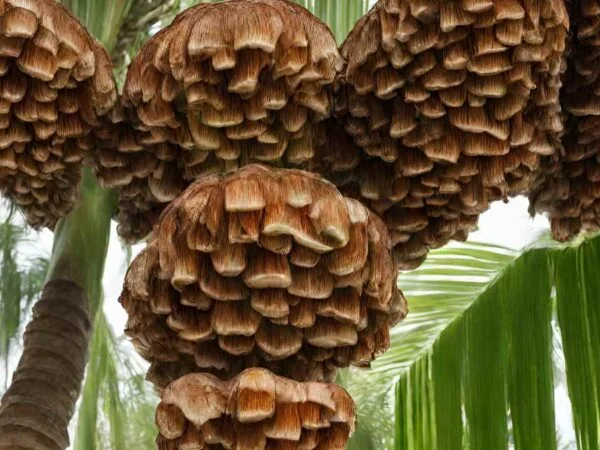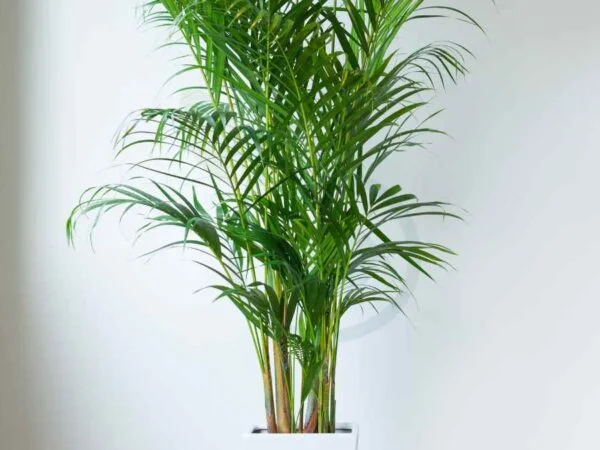When it comes to outdoor palm tree care, we’ve got you covered! Whether you're new to palms or a seasoned gardener, understanding their needs is essential for lush, thriving trees. From choosing the right location to watering and fertilizing, we'll guide you step by step. By following our expert advice, you can ensure your palm trees stay healthy and vibrant, transforming your garden into a tropical paradise.
Essential Steps for Outdoor Palm Tree Care
- Location: Choose a sunny spot with well-draining soil.
- Watering: Water deeply once a week; avoid over-watering.
- Fertilization: Use a slow-release fertilizer specially formulated for palms, applied 2-3 times per year.
- Pruning: Remove dead fronds and old fruit stems to prevent disease.
- Pests and Diseases: Watch for common issues like scale, spider mites, and fungal infections; treat promptly.
We Have More to Offer
Our detailed guides and expert tips are here to support your palm care journey. Stay tuned for more insights on maintaining the perfect outdoor palms!
Key Takeaways
- Choose palm tree varieties that are suitable for your climate and space to ensure successful growth.
- Prior to planting, prepare the soil by ensuring good drainage and adding necessary nutrients.
- When planting outdoor palm trees, dig a hole twice as wide as the root ball and at the same depth.
- Provide essential care for young palms by watering regularly, especially during dry periods.
- Understand the soil and light requirements of your palm trees, palms, to maintain their health and vitality.
- Water outdoor palm trees deeply but infrequently to encourage deep root growth and prevent waterlogging.
Choosing the Right Palm Trees
Selecting Species
Research different palm tree species suitable for your climate. Consider the height and spread of the palm tree species before selecting. Look for disease-resistant palm tree species.
Understanding Growth Patterns
Learn about the growth rate of the specific palm tree species you have. Understand the mature size of the palm tree to plan its location accordingly. Research if the palm tree grows in a clumping or solitary pattern.
Assessing Climate Suitability
Check if the palm tree species can thrive in your local climate conditions. Consider temperature fluctuations and humidity levels for the palm tree. Ensure the palm tree species can withstand any extreme weather conditions.
Preparing for Planting
Spot Selection
When planting an outdoor palm tree, choose a spot that allows ample space for the tree to reach its full size. Ensure the area has proper drainage to prevent waterlogging around the roots. Avoid locations near buildings, trees, or structures that may block sunlight.
Soil Improvement
Before planting, test the soil pH and nutrient levels to ensure they are suitable for the palm tree. Enhance the soil by adding organic matter such as compost to improve drainage and retain nutrients. It's essential to have well-draining soil to prevent waterlogged conditions.
Sun Exposure
For optimal growth, position the palm tree in an area that receives sufficient sunlight according to its species requirements. Monitor the sunlight exposure throughout the day to ensure the tree receives the right amount. If necessary, use shade cloth to protect the palm tree from excessive direct sunlight.
Planting Techniques
Digging the Right Hole
When planting an outdoor palm tree, make sure to dig a hole that is wider and deeper than the root ball. This allows ample space for the roots to spread out. Breaking up any compacted soil at the bottom of the hole is essential for healthy root growth. Creating a slight mound at the center of the hole will provide necessary support for the palm tree's root system.
Root Care
Handle the palm tree roots with care during planting to prevent any damage. Gently spread out the roots in the planting hole to encourage outward growth and stability. After planting, ensure to water the palm tree adequately to help the roots establish firmly in the soil.
Initial Watering
For optimal growth, water the newly planted palm tree deeply right after planting. It is crucial to maintain moist soil around the root ball without overwatering, which can lead to root rot. Using a slow watering technique ensures that water penetrates deeply into the soil, promoting strong root development.
Essential Care for Young Palms
Regular Watering
Develop a watering schedule based on the palm tree's water needs and local climate. Adjust watering frequency during rainy seasons to prevent overwatering. Water early in the morning to reduce water loss through evaporation.
Mulching Basics
Apply a layer of organic mulch around the base of the palm tree to retain soil moisture. Leave a gap between the mulch and the trunk to prevent rotting. Refresh the mulch layer periodically to maintain its effectiveness.
Sunlight Needs
Monitor sunlight exposure of the palm tree regularly to ensure it meets species requirements. Consider moving potted palm trees to sunnier spots during winter months. Protect palm trees from intense afternoon sun to prevent leaf scorching.
Soil and Light Requirements
Optimal Soil Mix
When caring for outdoor palm trees, ensure to use a well-draining potting mix containing perlite or sand. This mixture helps prevent waterlogging, which can harm the roots. Incorporating peat moss or coconut coir into the soil mix enhances moisture retention, crucial for the plant's health.
- Use well-draining potting mix with perlite or sand
- Consider adding peat moss or coconut coir
- Avoid heavy garden soil to prevent root rot
Adjusting Sun Exposure
To maintain the health of your indoor palm trees, periodically rotate them to ensure all sides receive an adequate amount of sunlight. For indoor palms, filter direct sunlight with sheer curtains or blinds to prevent leaf burn. When situating outdoor palm trees, choose locations that prevent sudden changes in sun exposure.
- Rotate indoor palm trees for even sunlight exposure
- Use sheer curtains or blinds to filter direct sunlight
- Strategically place outdoor palm trees to avoid sudden sun exposure changes
Watering Outdoor Palm Trees
Frequency and Amount
- Water outdoor palm trees deeply to promote deep root growth, adjusting the amount based on tree size and weather conditions.
- Utilize a drip irrigation system for consistent and efficient watering, ensuring optimal moisture levels for healthy palms.
Avoiding Overwatering
- Allow the top soil to dry before watering potted palms to prevent overwatering, especially during cooler months.
- Employ a moisture meter to accurately gauge soil moisture, preventing the risk of overhydration.
Pruning and Maintenance
Removing Dead Fronds
Trim dead or yellowing fronds near the trunk with sharp pruning shears to maintain palm tree aesthetics. Avoid cutting healthy green fronds, crucial for the tree's growth. Disinfect tools after each use to prevent disease spread.
Keeping Palms Healthy
Monitor palm tree health regularly for pests and diseases to address issues promptly. Provide adequate nutrients through fertilization for healthy growth. Promptly prune any damaged parts to prevent further infection spread.
Fertilization and Growth
Choosing Fertilizers
When fertilizing outdoor palm trees, opt for a balanced fertilizer containing micronutrients to support optimal growth. Avoid high-nitrogen fertilizers as they can potentially harm the palm tree roots. Consider using slow-release fertilizers for a consistent nutrient supply over an extended period.
Fertilizing Schedule
Apply fertilizer to outdoor palm trees during the early spring, just before the start of the growing season. It is crucial to adhere to the manufacturer's instructions regarding the correct dosage and application method. Avoid fertilizing your palm trees during the dormant winter months to prevent nutrient accumulation.
Dealing with Pests and Diseases
Identifying Common Issues
Palm trees can suffer from nutrient deficiencies, evident through yellowing leaves or stunted growth. Keep an eye out for signs to address them promptly. Pest infestations like spider mites and mealybugs often target palm tree leaves, affecting their health. Fungal diseases manifest as black spots or powdery mildew, threatening the tree's well-being.
Treatment Options
Combat nutrient deficiencies by providing targeted fertilization or applying foliar sprays directly to the affected palm tree. For pest control, consider using insecticidal soap or neem oil, effective against common invaders. To tackle fungal infections, apply fungicides preventively or as a treatment measure to safeguard the palm tree's health.
Closing Thoughts
In caring for your outdoor palm trees, remember that selecting the right species, proper planting techniques, adequate care, and maintenance are key to ensuring their health and growth. By understanding soil and light requirements, watering schedules, pruning needs, and dealing with pests and diseases promptly, you can foster thriving palm trees in your outdoor space. Remember to fertilize appropriately to support robust growth and overall well-being.
As you continue to nurture your outdoor palm trees, stay vigilant in observing their needs and addressing any issues promptly. Regular care and attention will reward you with lush, vibrant palm trees that enhance the beauty of your surroundings. Share your newfound knowledge with fellow gardeners to spread the joy of cultivating healthy outdoor palm trees.
Frequently Asked Questions
How do I choose the right palm trees for my outdoor space?
To choose the right palm trees, consider factors like climate, size, and care requirements. Research different types of palms to find ones suitable for your region. Consult with local nurseries for expert advice on selecting the best palm species for your outdoor area.
What are the essential steps for preparing outdoor palm trees for planting?
Prepare outdoor palm trees by selecting a suitable location with adequate sunlight and well-draining soil. Clear the planting area of debris and weeds. Ensure you have the necessary tools and materials ready for planting. Follow specific guidelines provided by the nursery or gardening experts.
How should I water outdoor palm trees to ensure their health and growth?
Water outdoor palm trees deeply but infrequently to encourage deep root growth. Consider the specific water needs of each palm species based on its size and environmental conditions. Use a slow watering technique to allow water to penetrate the soil deeply without causing runoff.
When is the ideal time to prune and perform maintenance on outdoor palm trees?
Prune outdoor palm trees during the spring or early summer months to remove dead fronds and promote healthy growth. Regularly inspect palms for signs of pests or diseases. Use clean, sharp tools to avoid damaging the tree. Follow proper pruning techniques recommended for each palm species.
What are some effective ways to deal with pests and diseases affecting outdoor palm trees?
Monitor outdoor palm trees regularly for signs of pests like spider mites, scales, or fungal diseases. Use natural remedies or insecticidal soaps to control minor infestations. For severe cases, consult with a professional arborist or horticulturist to identify the issue and recommend appropriate treatment options.
Image Source: Paid image from CANVA





